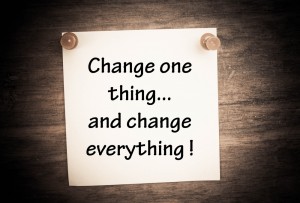For many experienced professionals, there’s a tug-of-war going on in their minds, pitting who they are in their careers and what they do, versus the pull of “there must be something more.” Many resolve this contest by letting go of the rope and relegating themselves to a life of “more of the same,” quietly marking time–often in toxic environments—until some imagined future release date. There are, however, a few people who let go in the opposite direction and reinvent themselves in their careers. For those who succeed in this lofty-sounding endeavor, they must navigate the most critical and treacherous of all steps: giving themselves permission to reinvent.
A Bit of Context on Career Reinvention:
Late last year, prompted by some coaching clients I offered a free webinar focused on helping experienced professionals get started on their journeys of career reinvention. (You can view the webinar replay here.)
The response to this material and my subsequent content on career reinvention tells me there are a significant number of individuals suffering or struggling silently with this issue.
During the webinar, I introduced a six-step process for navigating from today’s situation through the hard work of reinvention.
- Determination: is reinvention right for me or is a job change a better option?
- Self-discovery: how does my backstory tie prepare me for this?/what are my marketable strengths? What’s my purpose at this point in my career?
- Exploration: what is the universe of possible options and how can I learn more?
- Experimentation: one or two hypotheses on options where abilities and passion meet marketability.
- Preparation (conditioning): what do I have to do to create a successful start and sustaining approach?
- Launch: Go-time. How do I get to my target audience and begin serving?
While the steps are fundamentally the same for everyone, the path and pace through these steps vary by person. Also, it’s not always serial.
For those who are sufficiently motivated to embark upon this journey, the work is hard, mostly because it requires individuals to rethink their view of the person staring back at them in the mirror.
And interestingly, the barrier or blocker is not the inability to grasp a higher purpose. Almost everyone I work with tunes into their higher order purpose here at this stage of their life. Nor is it the ability to identify different options or causes to manifest this purpose.
The central issue is the individual giving himself/herself permission to reinvent.
4 Big Things in the Way of Giving Yourself Permission to Reinvent:
1. Lazy Brains and the Gravitational Pull of the Known
Comfort and familiarity fight giving yourself permission to reinvent your career. There’s comfort in having a place to go, a name on a door, and familiar issues and people to deal with every day. We like routine. Our brains like routine because they don’t have to work so hard. Change, after all, stimulates the fear centers of our brains and when we’re in safe, familiar surroundings, we operate efficiently on auto-pilot. The patterns and processes become grooved into our minds. It takes deliberate effort to break free from the gravitational pull of the present.
2. We Identify at a Deep Level with Our Roles and Titles
Give a former executive truth serum, and when asked about the most challenging part of letting go of the familiar in pursuit of something new and different, they will indicate something about being disoriented.
 Changing roles and vocations means giving up this persona that has been cultivated over years of work and reinforcement. Losing this identity is like losing our shadow and watching it dance merrily down the sidewalk while we stand there, staring in confusion.
Changing roles and vocations means giving up this persona that has been cultivated over years of work and reinforcement. Losing this identity is like losing our shadow and watching it dance merrily down the sidewalk while we stand there, staring in confusion.
In reality, none of us are our jobs. None of us are our titles. Yet, for many, the idea of separating from what we’ve come to believe is us (vice-president, senior engineer, CEO, Director) generates a panic attack. Helping individuals come to grips with this is an integral part of the process.
3. A Diluted Sense of Purpose and Cause
Once we move beyond the idealism of earlier life and face the reality of a seemingly never-ending stream of obligations, we lose track of what we once perceived was our greater purpose.
I’ve found over and over again with clients that one of the keys to career reinvention is tuning in to the dreams of youth and filtering them through the lenses of experience and wisdom.
4. We Rationalize Our Situation
A fascinating defense mechanism in our minds kicks into gear when faced with a choice of doing something difficult and even abstract versus standing pat where we are today. We are remarkable at rationalizing our decision to run-in-place.
In most cases, the genuine need to still make a living serves as a blocker. We rationalize that it’s easier to put up with the toxic boss or even the feeling of pointlessness that envelops so many of us in the name of our commitments. I get this, but it is a narrow-minded rationalization.
With a simple change of frame to indicate career reinvention must occur at the intersection of passion, purpose, abilities, and marketability, the entire game changes. The last component—marketability—suggests that we will not accept a hobby as a pursuit. We must reinvent and still do something others are willing to pay for, or all we have is a hobby.
Giving Yourself Permission to Reinvent
As mentioned, for everyone I’ve worked with on this incredibly important endeavor, the critical success factor is the issue of the individual giving himself/herself permission to reinvent.
I’ve learned that giving oneself permission happens over time in stages, and as part of a process. Instead of a simple on-off switch, it’s a rheostat that allows the user to turn up the brightness slowly.
 For most, it’s about taking the time to think deeply about a subject they haven’t in many years: the person staring back in the mirror.
For most, it’s about taking the time to think deeply about a subject they haven’t in many years: the person staring back in the mirror.
The self-discovery phase of my REINVENT™ process challenges you to look at yourself from multiple vantage points: your history (and your family’s history), the view others have on you from throughout your career, and the view you have on yourself when you perceived you’ve been at your best.
It’s this reflective work that allows individuals to understand themselves at a deeper level and to begin to remember or revive that sense of purpose they felt earlier in life. The benefit of recognizing purpose at this later career stage is you have the ability, knowledge, wisdom, and resources to do something about it.
Once purpose begins to emanate, the work becomes simple(r)—finding various means to manifest the purpose.
And once a sense of purpose takes hold in our minds, it gets easier to turn up the permission rheostat. We start to imagine ourselves in a new light, and the superficial title and trappings of our role become…well, superficial.
What I’ve observed as individuals have migrated from, “there must be something more,” to clear purpose is book and maybe movie worthy. It’s a rebirth of hope mixed with a sense of excitement for the journey. But permission comes before reinvention.
The Bottom-Line for Now:
Reinventing your career is a process, not a single step. Working through this process only becomes possible if you give yourself permission. Start small by simply giving yourself permission to explore. As you gain context and confidence, you’ll have ample opportunity to increase the permission rheostat until it’s bright enough to let you leave the old career behind you.
![]()







Leave A Comment